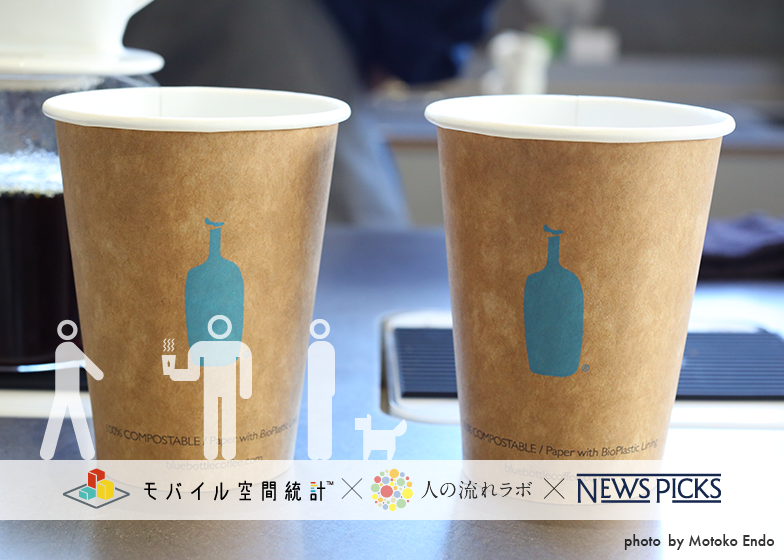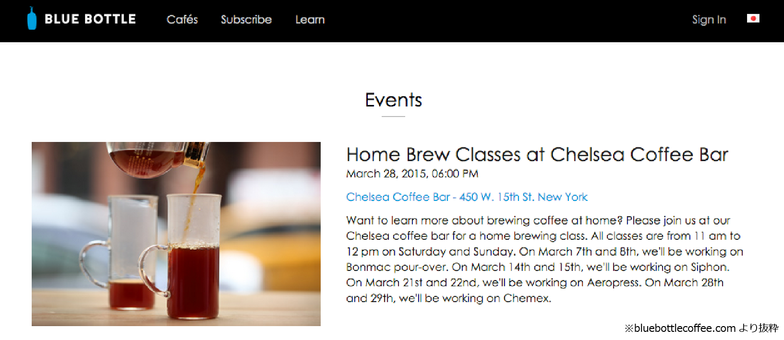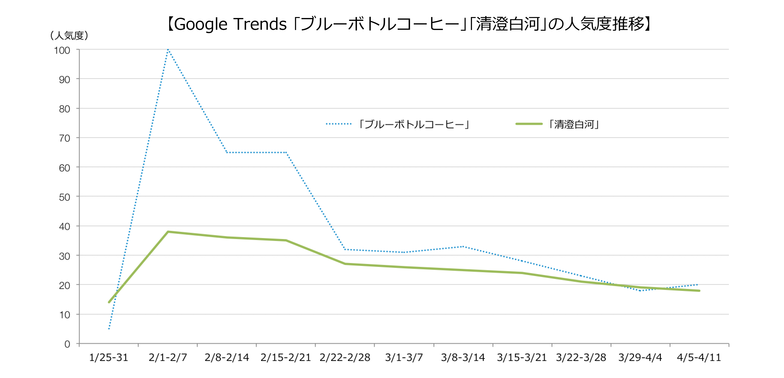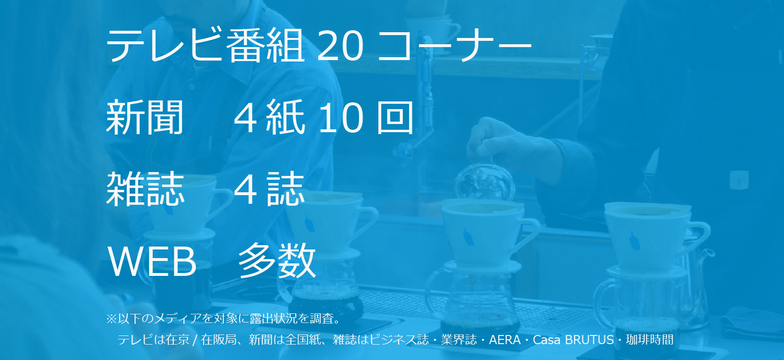
As a result, when we summarize the prefectures of residence for visitors to the Blue Bottle Coffee Kiyosumi-Shirakawa area ( ※See Part 1 for details ) within the first two months of opening, it spans a remarkable 30 prefectures—from Hokkaido in the north to Okinawa in the south—demonstrating its nationwide popularity.
Highly praised for its "commitment to flavor" and "refined design"
Let's look at Twitter posts to see what aspects were praised.
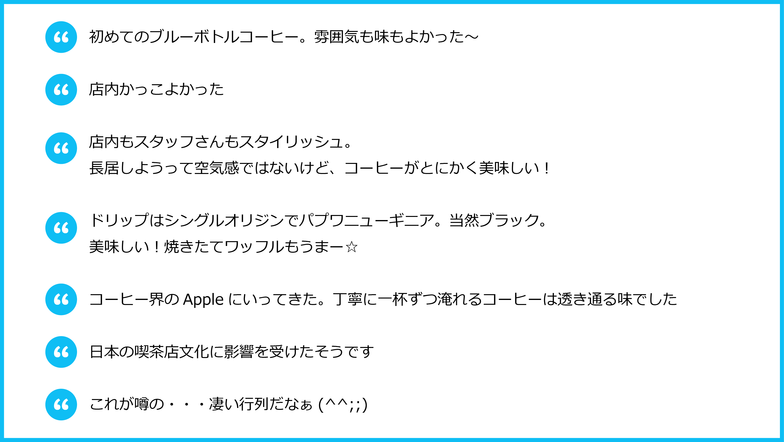
It's being praised in the context of "commitment to taste" and "refined design." Additionally, the fact that it "draws influence from Japanese culture" seems to foster a sense of familiarity. There were also many posts about the lines, further fueling its popularity.
According to statistics from the All Japan Coffee Association, "young women consume the least amount of coffee compared to other generations." However, our previous analysis revealed that many women in their 20s visited during the initial opening period.
Compared to Starbucks Coffee, which has a strong image for lattes and Frappuccinos, Blue Bottle Coffee has a stronger image for black coffee. I believe it was valued as a "stylish item" to the extent that it attracted women in their 20s, who might not typically gravitate towards black coffee.
Incidentally, Blue Bottle Coffee's brand statement is "Delicious / Hospitality / Sustainability." It was also mentioned that the founder emphasized minimalist design as a key focus.
Of these, "Delicious" and "Design" seem to have been accepted as intended.
Regarding "Hospitality," however, I came across posts like this:
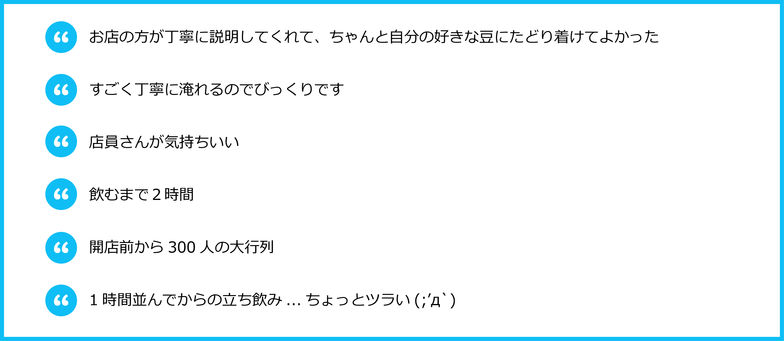
While staff efforts are appreciated, complaints arise about long lines and limited seating. The scale of the line frenzy seems to have been unexpected even for Blue Bottle Coffee. The founder stated something along the lines of, "We prioritized the Kiyosumi-Shirakawa location as a roastery and anticipated a slow start due to its location."
The Aoyama branch, being a size larger, saw queues and crowding ease sooner than Kiyosumi-Shirakawa. Many posts mentioned "got in smoothly" or "didn't wait as long as expected."
Blending into the "local" and contributing to the "community"
Terms like "local" and "community" are mentioned in founder interviews in relation to "Hospitality" and "Sustainability." This reflects the philosophy of "leveraging the unique character of the land where the store is located and the personalities of the people who gather there, providing a space that continues to be loved locally, thereby sustaining the value of the coffee shop."
In the past two analyses, we intentionally excluded the local Koto Ward to compare pre- and post-opening changes. However, upon speaking with staff, we learned that, unsurprisingly, many regulars are local residents.
Furthermore, during the evening hours, visits from residents of neighboring wards like Edogawa and Sumida are increasing, showing signs of the shop permeating the surrounding area ( please refer to the previous article for the data collection conditions).
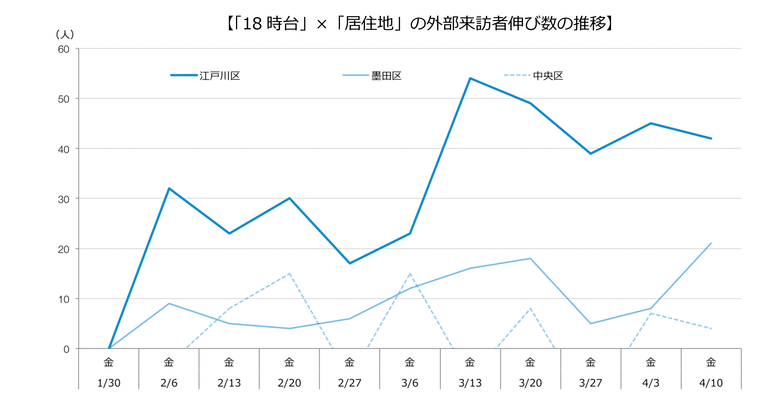
To further strengthen local connections going forward, I believe it would be beneficial to implement store-level local events in Japan, similar to those conducted in the US.
Holding these events during times when the store is relatively quiet and frequented by local and nearby residents (mornings and just before closing) would likely foster a stronger community.
A catalyst for rediscovering Kiyosumi-Shirakawa
Another notable aspect from a local perspective was how it created an opportunity to widely promote the appeal of the Kiyosumi-Shirakawa neighborhood on a national scale.
Looking at the popularity trends for "Kiyosumi-Shirakawa" and "Blue Bottle Coffee" on Google Trends, you can see their popularity moves in tandem.
Numerous magazine and web features on Kiyosumi Shirakawa appeared, and local residents proudly shared posts about the area on Twitter.
Comparing the trends in visitors to the Blue Bottle Coffee area on holidays with those to the adjacent Kiyosumi Garden area reveals a highly correlated movement, suggesting that Blue Bottle Coffee serves as a catalyst for exploring the neighborhood.
Local shopping districts have skillfully capitalized on this trend, creating sightseeing maps alongside free pamphlets and distributing them at local shops.
While this is likely the result of the accumulated character of various shops, it's fascinating that Blue Bottle Coffee's arrival served as a catalyst, elevating the value of Kiyosumi-Shirakawa. It seems Blue Bottle Coffee's vision is beginning to take shape.
Summary
What did you think of "Blue Bottle Coffee" as seen through location-based big data?
Here's a summary of this article.

To further raise expectations and meet them going forward, I believe localizing the "educational content for enjoying delicious coffee" currently featured on the US website and hosting local events are key steps.
Furthermore, for visitors from slightly farther away, like those residing in Ichikawa City or Funabashi City, as noted previously, encouraging them to explore and enjoy the entire Kiyosumi-Shirakawa area could lead to activities that enhance the value of both the local community and the brand itself.
This concludes the "Blue Bottle Coffee Through Location-Based Big Data" series, which we've been running over three installments.
We believe that leveraging location-based big data makes it easier to infer visitors' "movement patterns" and "motivation," leading to improved hypothesis accuracy and faster implementation of strategies.
We will continue this series under the title "People Flow Seen Through Location-Based Big Data," exploring different themes. Please stay tuned.
Thank you for reading to the end.
NewsPicks NewsPicks offers original articles created by Japan's top infographic editors, providing business-relevant information in an easy-to-understand format.

